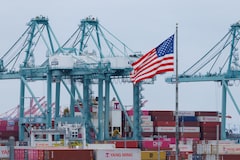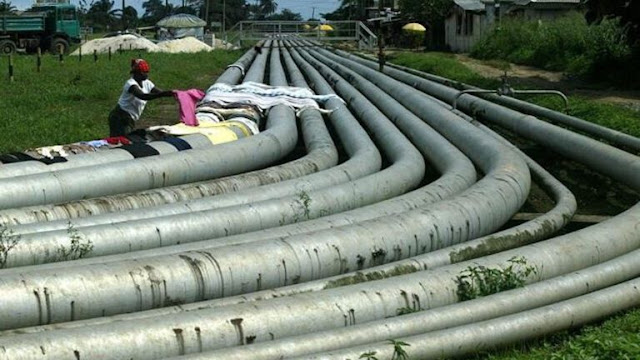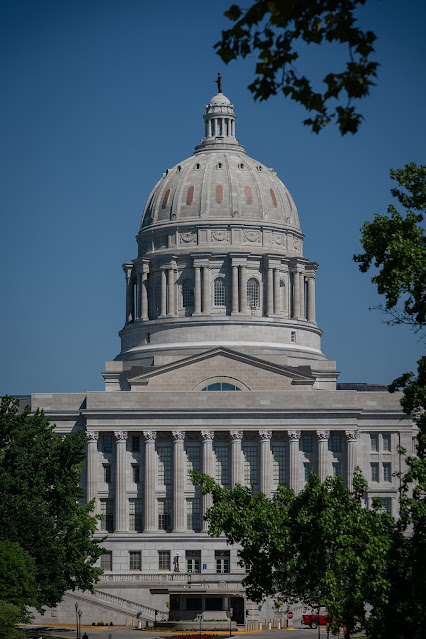On September 9, 2025, the U.S. Supreme Court announced it would take up a case to determine the legality of President Donald Trump’s expansive global tariffs, a decision that could profoundly shape the boundaries of executive power in U.S. trade policy. This move sets the stage for a landmark legal battle over one of Trump’s boldest economic initiatives, which has sparked intense debate over its economic impact, constitutional validity, and implications for international trade relations. The case stems from a lower court ruling that found Trump exceeded his authority by imposing widespread tariffs under the International Emergency Economic Powers Act (IEEPA) of 1977, a law intended for national emergencies. The Supreme Court’s decision to hear the case follows an urgent appeal from the Justice Department, prompted by a federal appeals court’s ruling on August 29, 2025, which declared most of Trump’s tariffs illegal. This ruling has placed trillions of dollars in customs duties at stake over the coming decade, with far-reaching consequences for U.S. consumers, businesses, and global trade dynamics.
Background: Trump’s Tariff Policy and Its Rationale
Since taking office for his second term, President Trump has made tariffs a cornerstone of his economic and foreign policy agenda. The tariffs in question, often referred to as “reciprocal tariffs,” were imposed in April 2025 on a wide range of U.S. trading partners, with additional levies targeting specific countries like China, Canada, and Mexico in February 2025 to address concerns such as fentanyl trafficking. These tariffs have significantly increased the average U.S. tariff rate to approximately 18.6% as of August 2025, the highest since the 1930s, with some goods from countries like India and Brazil facing rates as high as 50%, and Chinese imports exceeding 100% in some cases. Trump justified these measures by citing the U.S. trade deficit as a national emergency under the IEEPA, which grants the president authority to take economic actions in response to “unusual and extraordinary” threats.
The administration argues that the tariffs are essential to address decades-long trade imbalances and protect American industries from unfair foreign competition. U.S. Treasury Secretary Scott Bessent has emphasized the urgency of curbing the influx of fentanyl, linked to approximately 70,000 annual deaths in the U.S., as a legitimate national emergency justifying the use of IEEPA. Bessent has also expressed confidence that the Supreme Court will uphold the president’s authority, citing the need to maintain leverage in trade negotiations and prevent an “unprecedented economic and foreign policy crisis.” However, critics, including Democratic-led states and small businesses, argue that the tariffs exceed presidential authority, harm the economy, and violate constitutional principles by bypassing Congress, which holds the constitutional power to regulate commerce and impose tariffs.
The Legal Challenge: A Clash Over Executive Power
The legal dispute centers on two key cases: V.O.S. Selections Inc. v. Trump, heard in the U.S. Court of International Trade (CIT), and Learning Resources, Inc. v. Trump, brought before the U.S. District Court for the District of Columbia. These cases involve challenges from small businesses and a coalition of Democratic-led states, including Oregon and New York, which argue that Trump’s tariffs have caused economic harm and overstepped executive boundaries. In May 2025, the CIT ruled that Trump lacked the authority to impose long-term tariffs without congressional approval, a decision upheld by the U.S. Court of Appeals for the Federal Circuit in a 7-4 ruling on August 29, 2025. The appeals court emphasized that the IEEPA does not grant the president the power to impose tariffs of unlimited duration, as the Constitution vests Congress with the authority to levy taxes and tariffs.
The Federal Circuit’s decision was a significant setback for the Trump administration, which called the ruling “judicial overreach.” The court allowed the tariffs to remain in place until October 14, 2025, to give the administration time to appeal to the Supreme Court. On September 3, Solicitor General John Sauer filed a petition urging the Supreme Court to expedite the case, proposing a schedule with arguments by early November 2025. The administration argued that the Federal Circuit’s ruling has disrupted sensitive trade negotiations and cast legal uncertainty over Trump’s efforts to protect the U.S. economy. The Supreme Court’s swift decision to take up the case on September 9 reflects the urgency and magnitude of the issue, which could redefine the scope of presidential power in trade policy.
Economic and Political Implications
The tariffs have had a profound impact on the U.S. economy, generating approximately $27 billion in customs duties in June 2025 alone, quadrupling previous levels and becoming a significant revenue source for the federal government. This revenue has been critical to offset losses from Trump’s recent tax bill, but economists warn that the tariffs threaten to raise consumer prices, reduce corporate profits, and disrupt supply chains. Financial markets have experienced volatility due to the uncertainty surrounding the tariffs, with businesses struggling to manage production, staffing, and pricing amid fluctuating trade policies. The tariffs have also strained relations with trading partners, some of whom have questioned Trump’s authority and adjusted their negotiating positions in response to the legal uncertainty.
Politically, the tariffs have galvanized both supporters and opponents. Trump has framed the levies as a tool to “make America great and rich again,” using them to extract concessions in trade negotiations and counter perceived unfair practices by countries like China and India. On Truth Social, Trump dismissed the appeals court ruling as “incorrect” and “highly partisan,” expressing confidence that the Supreme Court would reverse the decision. Meanwhile, opponents, including Democratic-led states and trade associations, argue that the tariffs harm consumers and businesses while exceeding presidential authority. Oregon Attorney General Dan Rayfield, for instance, has highlighted the economic damage to states and the constitutional violation of bypassing Congress.
The Role of the Supreme Court
The Supreme Court’s decision to hear the case sets up a critical test of the balance of power between the executive and legislative branches. The court will likely examine whether the IEEPA, enacted in 1977 to address national emergencies, grants the president the authority to impose sweeping tariffs without congressional approval. The administration argues that the trade deficit and fentanyl crisis constitute legitimate emergencies under the IEEPA, while challengers contend that these issues do not meet the threshold of “unusual and extraordinary” threats required by the law. The court’s ruling could have broader implications for the use of emergency powers in other contexts, potentially reshaping the scope of executive authority.
The composition of the Supreme Court, with a conservative majority, may play a significant role in the outcome. Some analysts, including Treasury Secretary Bessent, express confidence that the court will uphold Trump’s authority, citing its recent rulings favoring expansive executive power. However, the court’s application of the Major Questions Doctrine, which requires clear congressional authorization for significant executive actions, could complicate the administration’s case. If the court rules against the tariffs, it could trigger large-scale refunds for importers and curtail presidential trade authority. Conversely, a ruling in favor of the administration could entrench broad executive powers, potentially allowing future presidents to impose similar measures with minimal oversight.
Alternative Legal Strategies and Backup Plans
In anticipation of a potential Supreme Court loss, the Trump administration is exploring alternative legal authorities to sustain its tariff policy. Bessent has suggested invoking Section 338 of the Smoot-Hawley Tariff Act of 1930, which allows the president to impose tariffs of up to 50% for five months on countries found to discriminate against U.S. commerce. While less efficient than the IEEPA, this authority could serve as a fallback if the Supreme Court strikes down the current tariffs. The administration is also preparing a legal brief to emphasize the urgency of addressing trade imbalances and the fentanyl crisis, framing these issues as critical to national security and public health.
Broader Context: Tariffs and U.S. Trade Policy
To understand the significance of this case, it’s worth examining the broader context of U.S. trade policy and the role of tariffs. Tariffs, or taxes on imported goods, have historically been used to protect domestic industries, generate revenue, and influence foreign policy. Trump’s tariffs, however, are unprecedented in their scope and ambition, targeting nearly all U.S. trading partners and covering a wide range of goods. The “reciprocal” tariffs aim to match or exceed the tariff rates imposed by other countries on U.S. exports, while the fentanyl-related tariffs target specific countries implicated in drug trafficking. These measures have reshaped global trade dynamics, prompting retaliatory tariffs from countries like China and India and complicating negotiations with allies like Japan and the European Union.
The economic impact of tariffs is a subject of intense debate. Proponents argue that they protect American jobs, encourage domestic manufacturing, and reduce reliance on foreign goods. Critics, however, contend that tariffs increase costs for consumers and businesses, disrupt supply chains, and provoke retaliation from trading partners. For example, the tariffs on Chinese imports, which exceed 100% in some cases, have raised the cost of electronics, clothing, and other goods, contributing to inflationary pressures. Small businesses, like those involved in the V.O.S. Selections and Learning Resources cases, have reported significant financial strain, as higher import costs erode profit margins and force price increases.
The legal battle also reflects broader tensions over executive power in the U.S. The Constitution grants Congress the authority to regulate commerce and impose tariffs, but presidents have increasingly relied on emergency powers to enact trade policies unilaterally. The IEEPA, originally intended for crises like hostage situations or terrorist threats, has been stretched to cover economic issues like trade deficits, raising questions about its appropriate use. The Supreme Court’s ruling could set a precedent for how future administrations wield emergency powers, with implications for trade, national security, and other policy areas.
Potential Outcomes and Future Implications
The Supreme Court’s decision, expected by mid-2026, will have significant ramifications for U.S. trade policy and the economy. If the court upholds the tariffs, it could embolden future presidents to use emergency powers more expansively, potentially leading to further trade disruptions. If the court strikes down the tariffs, it could lead to billions in refunds for importers, force a reevaluation of Trump’s trade strategy, and strengthen congressional oversight of trade policy. The ruling could also influence ongoing trade negotiations, as foreign leaders may adjust their positions based on the perceived stability of U.S. tariff policies.
In the meantime, the tariffs remain in effect, continuing to shape economic and political dynamics. Trump has signaled he may “unwind” trade deals with countries like Japan, the European Union, and South Korea if the Supreme Court rules against him, a move that could further destabilize global trade. The administration’s recent executive order implementing a trade pact with Japan, which includes 15% tariffs on most Japanese imports, underscores the ongoing use of tariffs as a negotiating tool.
Conclusion
The U.S. Supreme Court’s decision to review the legality of Trump’s tariffs marks a pivotal moment in the debate over executive power and trade policy. As the court prepares to hear arguments, the nation awaits a ruling that could redefine the balance of power between the president and Congress, reshape U.S. trade relations, and impact the wallets of consumers and businesses alike. With trillions of dollars in customs duties at stake and the potential for significant economic and diplomatic consequences, this case represents one of the most consequential trade disputes in U.S. history. Whether the court upholds or strikes down the tariffs, its decision will have lasting implications for the future of American trade policy and the scope of presidential authority.







